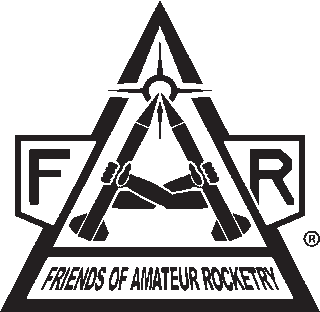All rockets are safe when handled properly. You can design, build, and transport all rockets without any hazards. All of the unsafe parts of launching and static firing a rocket is done out at FAR Site under the supervision of a state licensed pyrotechnic operator. All launches and static firings are performed by remote control with all personnel in a blockhouse, viewing bunkers, or at a safe distance.
Bipropellant Rockets
Bipropellant rockets, rocket engines, or static firing stands are safely transported with no fuel, oxidizer, or pressurants onboard. These rockets, rocket engines, or rocket engine static firing stands become progressively more unsafe when you: load fuel, load oxidizer, inserting the igniter, pressurize the pressurant tank, pressurize propellant tanks, ignite the igniter, and open the main propellant valves. Launch or static firing preparations of loading fuel, loading oxidizer, loading pressurant, and inserting the igniter are accomplished by key team members with the rocket on the static stand or launch rail in launch position and observers cleared of the launch pad or static stand. All the remaining operations are performed with all personnel clear of the static stand or launch pad, and in viewing bunkers, blockhouse, or at a safe distance. Hazardous operations like pressurizing pressurant and propellant tanks, igniting the igniter, and opening the main propellant valves are all done using remote commands. DOT rated pressurant tanks maybe pressurized to their maximum operating pressure with personnel nearby. DANGER, this type of rocket maybe susceptible to a BLEVE, depending on the type of propellants and tanks you use. (See the BLEVE Danger page.)
Hybrid Rockets
Hybrid rockets, rocket engines, or static firing stands are safely transported with an inert fuel grain installed and no oxidizer or pressurant on-board. These rockets, rocket engines, or static firing stands become progressively more unsafe when you: insert an igniter, load oxidizer, pressurize the pressurant tank, pressurize the oxidizer tank, ignite the igniter, and open the main propellant valve. Static firing or launch preparations of inserting the igniter are accomplished by key team members with the rocket on the static stand or launch rail in launch position and observers cleared of the launch pad or static stand. All the remaining operations are performed with all personnel clear of the static firing stand or launch pad, and in viewing bunkers, blockhouse, or at a safe distance. Hazardous operations like loading the oxidizer, pressurizing pressurant tanks, pressurizing the oxidizer tank, igniting the igniter, and opening the main propellant valve can all be done by remote commands. DOT rated pressurant tanks maybe pressurized to their maximum operating pressure with personnel nearby. DANGER, this type of rocket may also be susceptible to a BLEVE, depending on the type of oxidizer and tanks you use. (See the BLEVE Danger page.)
Commercial Solid Rockets
Commercial solid rockets are safely transported with no motor installed and the single use motor or reload grains in their shipping package. This type of rocket becomes more unsafe when you remove the single use rocket motor or reload grains from their packaging, assemble the rocket motor, put the rocket motor in the rocket, put an igniter in the rocket motor, and ignite the motor. Assembling the motor and inserting the motor into the rocket can be performed off the launch rail. Once the rocket is placed on the launch rail and placed in the launch position and observers cleared from the launch pad, an igniter is inserted into the motor by key team members. All the remaining hazardous operations are performed with all personnel clear of the launch pad, a safe distance, in viewing bunkers, or in the blockhouse. The remaining hazardous operation of igniting the igniter is done by remote command. Most motor manufacturers like to treat solid propellants as 1.3C low explosives. FAR Site has an explosives permit. You can order and pay for a commercial solid motor and send it to the FAR Site.
Experimental Solid Rockets
Experimental rocket motors become unsafe after it is formulated, mixed, and processed. The single use rocket motor or reload grains are then placed in an explosives-magazine for safe keeping. Experimental solid rockets are safely transported with no motor installed and the experimental-motor stored in the FAR explosives-magazine. This type of rocket becomes more unsafe when you remove the single use rocket motor or reload grains from the explosives-magazine, assemble the rocket motor, put the rocket motor in the rocket, put an igniter in the rocket motor, and ignite the motor. Assembling the motor and inserting the motor into the rocket can be performed off the launch rail. Once the rocket is placed on the launch rail and in the launch position, an igniter is inserted into the motor by key launch team personnel. The remaining hazardous operation is performed with all personnel clear of the launch pad and in the blockhouse, viewing bunkers, or a safe distance. The remaining hazardous operation of igniting the igniter is done by remote command.
The State of California treats experimental solid propellants as 1.3C low-explosives. FAR has an explosives manufacturing permit. You can mix the propellant on site and store the experimental solid propellant in an explosives-magazine at FAR Site.
